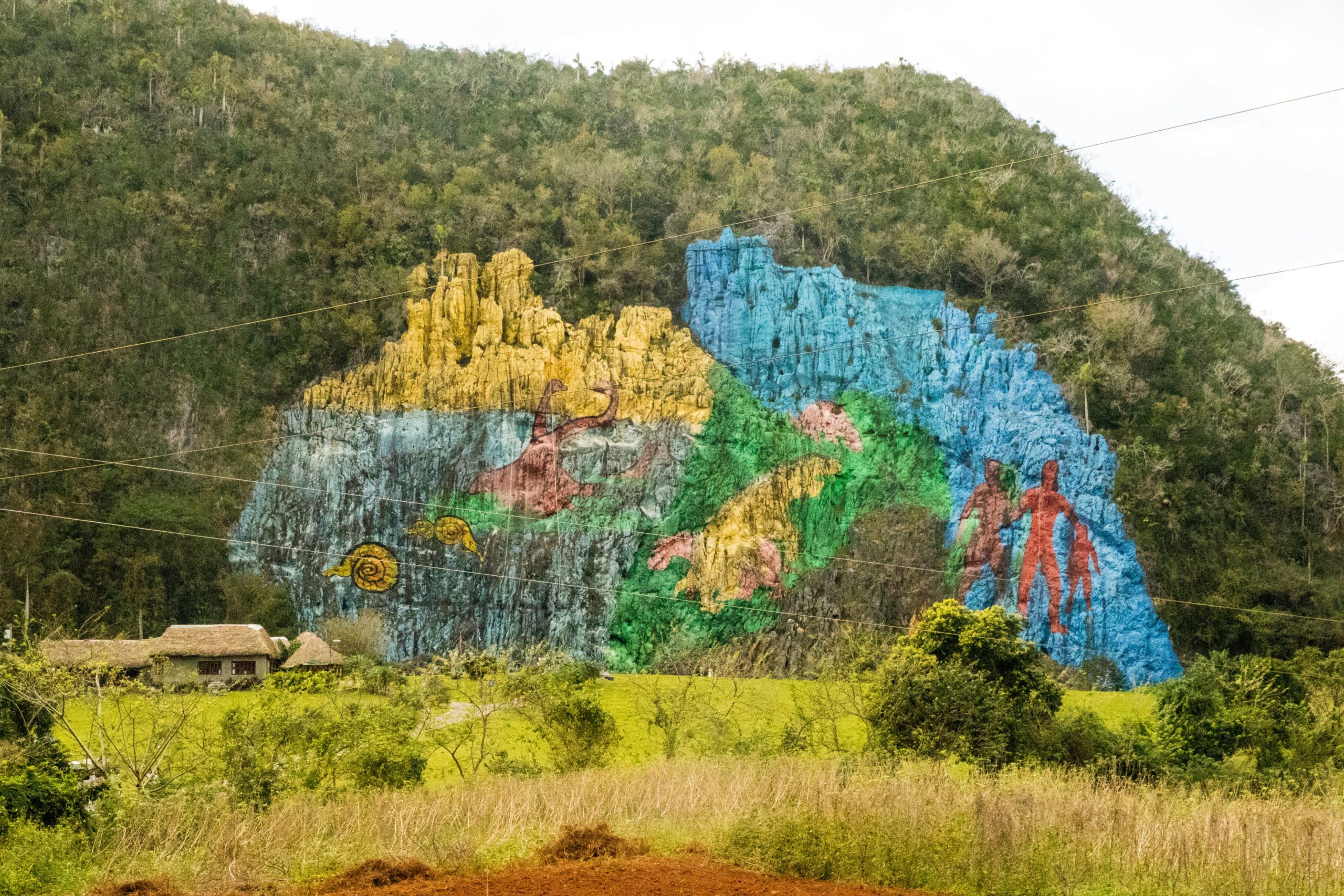
Tourist destination
-
Cuba for Groups > Destination > Viñales
Viñales
Located in the province of Pinar del Río, in western Cuba, the Viñales Valley is one of the country’s most stunning natural wonders. Surrounded by the Sierra de los Órganos, this region is famous for its unique limestone formations known as mogotes, which create a breathtaking landscape. In 1999, the valley was declared a National Park and later that same year was recognized as a UNESCO World Heritage Site. Viñales is about 178 km from Havana and 25 km from the city of Pinar del Río, making it a must-visit destination for nature lovers and those interested in Cuban culture.



More
Some of the park’s main attractions include the Cueva del Indio, which features an underground river, the famous Mural de la Prehistoria, Rancho San Vicente, and the stunning Mirador de Los Jazmines, which offers a panoramic view of the valley.
The mogotes are unique mountain formations in Cuba, reaching impressive heights and resembling the karst landscapes of China and the Malay Peninsula. The valley also features slate elevations, composed of some of the oldest rocks found in the Caribbean, making it a fascinating destination for geology enthusiasts.
One of the most iconic sites is the Mural de la Prehistoria, located in the Dos Hermanas Valley. Painted on a natural rock wall on the Pita mogote, this artwork illustrates the region’s evolutionary history. The mural is 120 meters high and 160 meters long and was designed by Leovigildo González Morillo, then Director of Cartography at the Cuban Academy of Sciences. It depicts the evolution of fauna and humans in the Sierra de los Órganos, showcasing scenes of the indigenous Guanahatabey people, prehistoric mammals, and various other species.
What are the best things to see in Viñales?
Viñales is a charming town with colorful colonial-style houses, many built by their owners. This traditional setting offers one of the most authentic rural experiences in Cuba. Notable attractions include the Paleontological Museum and the Municipal Museum, where visitors can learn about the area’s history and biodiversity. The Viñales Botanical Garden is another highlight, featuring tropical plants from Cuba and beyond, as well as hummingbirds, parrots, and other regional birds. The town’s 19th-century Sacred Heart Church is another significant landmark. Beyond its natural beauty, Viñales is also known for its tobacco production and craftsmanship. A visit to a tobacco plantation, such as Casa del Veguero, is highly recommended. Here, visitors can witness the traditional process of growing, drying, and rolling Cuba’s world-famous cigars.
What are the best excursions from Viñales, Cuba?
One of the most popular excursions is exploring Viñales National Park, which can be done on horseback, by bike, on foot, or via a private transfer. This allows visitors to get up close to the area’s rich flora and fauna while also experiencing its expansive tobacco fields. A must-visit is Cayo Jutías, a small paradise with turquoise waters and white sand. Its name comes from a rodent native to the Caribbean. This destination is perfect for snorkeling or kayaking along the coast. Another recommended trip is to Cayo Levisa, accessible via a short ferry ride. This is the ideal place for those seeking relaxation, with pristine beaches and lush tropical surroundings. Visitors will be accompanied only by palm trees, butterflies, and native birds like the tocororo in a peaceful and unique setting.
Where to stay in Viñales?
For an authentic experience, staying in a casa particular is highly recommended. This allows visitors to connect with local families and experience their way of life. Many of these homes feature charming porches and offer delicious homemade Cuban cuisine. For those preferring hotels, Viñales offers options such as Hotel Los Jazmines, La Ermita, and Hotel Central, all providing comfort and stunning valley views.


